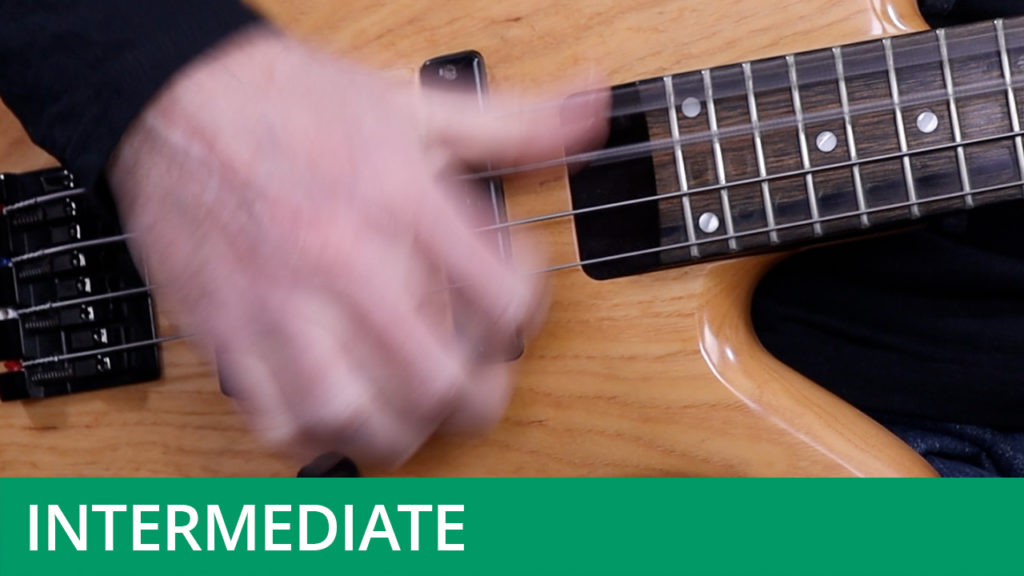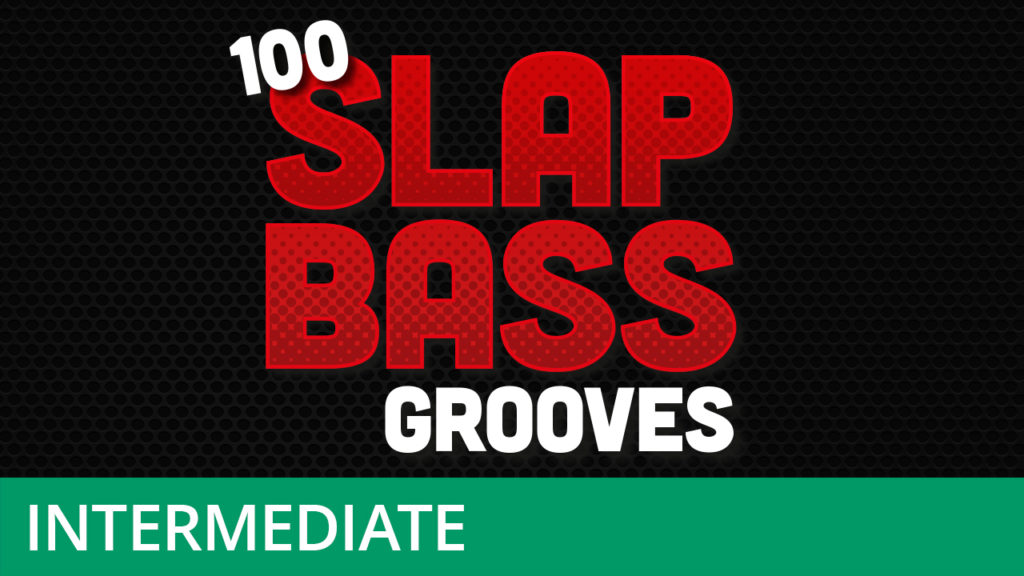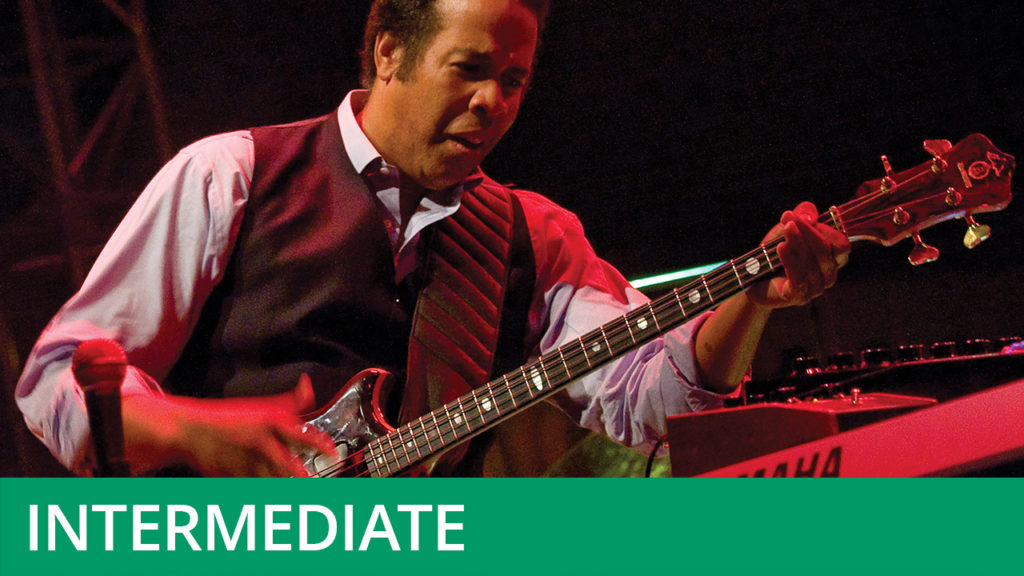Bass Lick of the Week #41
Course Duration: | Difficulty Level: 6
This week’s exercise is a quirky, up-tempo slap and pop line which was inspired by the playing of Les Claypool, the bassist with Primus.
The first bar opens with some power chords, which are played using the strumming technique. To play these chords, flick downwards with all of the fingers of your picking hand, allowing your fingernails to strike the strings - the sound of the nails hitting the strings is what gives strumming the hard attack that you need. After playing this downward strum, bring your hand back upward, strumming the strings again with the fingertips. This down-up strumming motion is easier to do than it is to explain! I recommend fretting the notes in each chord with the first and fourth fingers, and allowing the second finger to rest on the E and A-strings, preventing them from ringing. On the second half of this bar, some slap and pop figures are played, based off of the open E-string. Note that the fretting hand is required to play percussive ghost notes in between some of the slapped/popped notes. These are indicated with the letters ‘lh’ in the slap guides. Using the fretting hand in this way is something that Les Claypool often does in his lines - see ‘Lacquer Head’ from Primus’s AntiPop album for a great example.
In the second bar you’ll be sliding from the low F# into the G, then popping the open G-string. You can allow the open G’s to ring here, since the sound of the notes blurring into one another is not undesireable in a line like this. This concept is expanded upon in the fourth bar: here, you’ll slide upwards from F# into G, pop the open G-string, then slide downwards from D to C# and pop the open G-string. The open G against the C# results in a tritone interval which is very dissonant, and very striking. Again, you can allow the notes to ring into one another here. This line is played as groupings of three notes against a straight semiquaver rhythm, so the time can feel a little strange initially.
This line was recorded on a GB Guitars Rumour 4-string.
To download the backing track and PDF worksheet for this exercise, please visit the Free Stuff section of the website.




